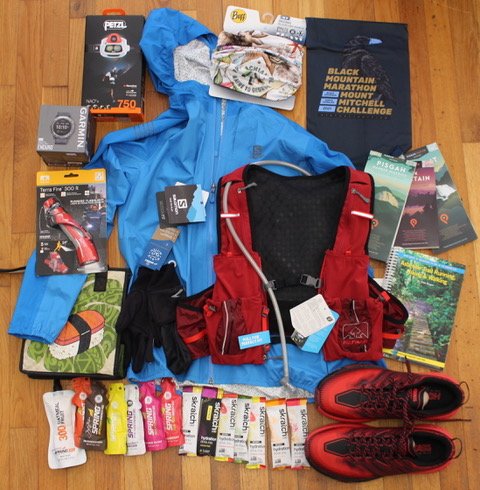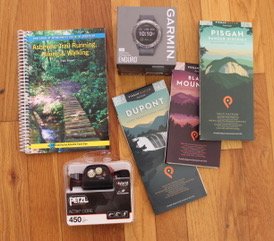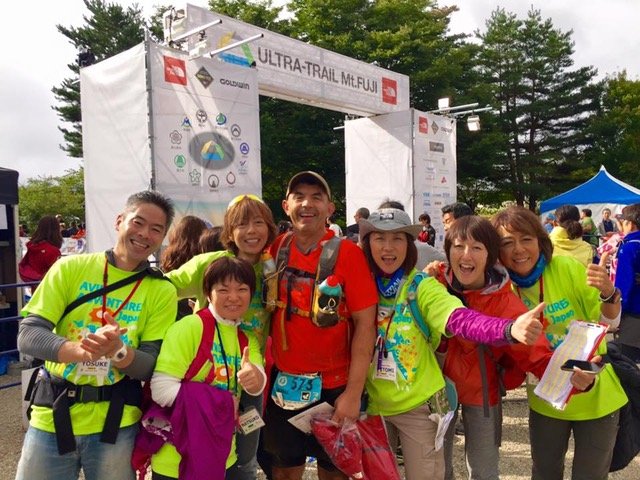Trail Running Tips
By Thomas Brown
I love the excitement that spring brings with more and more people hitting the trails. When I started trail running over 30 years ago, I would head out on the trails completely carefree, without any more of a plan than going hard and having fun. Needless to say, I made some mistakes but luckily I survived without incident and learned a few things along the way. As a recent military retiree turning 50 this month, I continually reflect upon what I learned and what I can give back to my life-long hobby of trail running. Now that I’m part of another amazing running community here in Western North Carolina, I want to share a few trail running tips that I find applicable for every trail runner from the novice to experienced, whether local or from out of town.
Get a trail shoe.
Working at a running specialty store, this is undoubtedly my number one suggestion. These specialized shoes are built to hold up to a variety of conditions you’ll encounter. When customers come into the store asking for a trail running shoe, the first thing I ask is what trails they plan to run. With that I have them consider the tread and the amount of protection needed and also the amount of cushion and need for comfort.
I try to find a mix of comfort, cushion, grip, and rock protection, which really signifies something different to everyone. All trails are different which is a big factor when picking your shoes, but in the Asheville area you can always count on a few rocks, mud, and roots. For me, I choose a shoe that resembles what I wear on the road but with more protection and grip. My favorite: Hoka Speedgoat. Honorable mention: Brooks Cascadia, Saucony Peregrine
Pick out a comfortable pack.
Handheld water bottles are great for a short run, but for longer runs a hydration pack is needed for both safety and practicality. I always felt the first hydration packs were awkward to use but they really have improved considerably over the past few years with regards to weight, comfort, and durability. I always recommend trying on the pack for comfort and base your decision on need. I like versatility, so I always choose a pack that has pockets for handhelds in the front as well as a bladder in the back. My favorite: Nathan Air 7L 2.0. Honorable mention: Salomon Advanced SKIN 5 SET.
Find your nutrition.
I like boiled potatoes and other complex carbs when I race, but I still love potato chips and M&M’s. Gels are excellent for a variety of reasons, especially their shelf life, but sometimes I need more solid food for longer runs and races. Running a few races overseas, I learned to train on the food that would be at the race. Wow, I still remember eating miso soup in Japan, avocados in California, a slice of pizza in Colorado, but my all time favorite will always be grabbing a Spam musubi in Hawaii. Foods that work for me may not work for other people and vice-versa. Bottom line: try different foods during your training and find out what works. My favorite besides Spam musubi: Spring gels. Honorable mention: Gu gels, homemade oatmeal cookies.
Don’t forget about hydration.
Maybe the most important tip. I always carry water, even in the winter. Everyone does it differently, but for the most part I tend to keep my hydration and nutrition separate. I do like adding some electrolyte replacement to my hand-held, but never in my water bladder. Adding anything sugar-based is an invitation for mold. If you’re getting water from streams, don’t forget to either filtrate or purify accordingly. My favorite: Pure H2O. Honorable mention: Scratch hydration drink mix.
Have your hat, gloves, and jacket ready.
I sometimes swap my warm beanie out for a cap, but I never forget my jacket. Rain in the mountains can be dangerously cold, even in the summer, and weather can change within minutes. I used to just carry a windbreaker in drier regions but now opt for a rain jacket especially with some of the newer lightweight, breathable rain jackets out there. Even if I don’t stay completely dry, I will at least keep warm enough. I also bring gloves in the summer to protect my hands in case the trails are rocky and slippery. In the winter, I carry a set of outer mitten shells. My favorite: Salomon Bonatti Water Proof Jacket. Honorable mention: Buff Original Multifunctional Headwear, Brooks glove/mittens
Buy a map or book guide and learn the area.
Nothing beats learning a trail by actually running it, but having a map or guidebook sure helps. Many of us will use an app on a smartphone but cell coverage is not always reliable so a GPS watch like a Garmin is a good idea. I love that digital maps are available and this is another aspect of trail running that has greatly improved in the past 30 years. Still, I tend to always buy a hard copy initially. My favorite: Asheville Trail Running, Hiking & Biking by Trish Brown. Honorable mention: Pisgah Map Company Trail Guide maps
Tell someone where you are going.
Also mention how long you’ll be gone. Staying safe is always a priority on any run. After a few scary close calls in Alaska, I eventually resorted to telling my wife where I was running and for how long. Slipping on ice, weather changes, bears, and moose were just a few things that could quickly change the dynamics of any run. Hawaii was different but even scarier. Slipping and breaking a leg, or falling off a cliff could easily happen even in paradise. Now that I’m settled in the Asheville area, I tend to run with a group and I still let someone know where I’m going. My favorite: Tell my wife. Honorable mention: Carry a cell phone, run with a group (like one of Jus' Running's weekly group runs!)
Get a headlamp and back-up flashlight.
One time or another, if you keep on trail running, you’re going to need a light. Luckily with the advancement of technology, rechargeable lights are readily available. A small back-up flashlight is great to have, especially in foggy conditions. When choosing a headlamp, I always recommend considering brightness, burn time, and comfort. My favorite: Petzl RL Swift Headlamp. Honorable mention: Any small flashlight.
Go Race and volunteer!
I love to race and recently have begun to volunteer on a regular basis. It’s a great way to meet other trail runners, learn different trails, and support others in the sport that has given me so much. Running ultra-marathons has mainly shaped my thought process on trail running but I do also enjoy the shorter trail races. Western North Carolina has some amazing race directors putting on some incredible races in a safe and fun environment. I love that many of the races give back to the community and I find it essential to volunteer when possible. My advice: if you haven’t joined a race, try it out and if you’re a veteran, keep it up. My favorite: Shut-in Ridge Trail Race. Honorable mention: Black Mountain Marathon, Table Rock Ultras.
I hope everyone enjoys the trails this spring. I feel very fortunate to live in one of the best trail running areas in the country. Stay safe and have fun!
-Thomas






